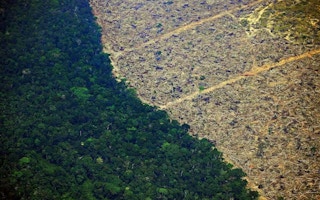Even before taking office in January 2023, Brazil’s president Luiz Inácio Lula de Silva promised to end illegal deforestation in the Amazon. He also revived partnerships to amplify financing of forest protection and announced a presidential summit of Amazon Basin countries to be held in Belem in August. Lula is determined to accelerate global cooperation to protect the world’s largest tropical forest, including by leveraging the newly capitalized Amazon Fund which is supported by Norway and Germany. President Lula and his environment minister, Marina da Silva, have made the protection and preservation of the Amazon a priority.
They have a point. The value of intact forests, especially the vast tropical biomes in the Amazon, Congo, and Indonesia, is immense. And without them, there is no hope of keeping global warming below 1.5° Celsius. To protect them (and, by extension, the Earth), we believe a new incentive mechanism that provides direct compensation for forest conservation can help.
Most climate scientists agree that the only way to reverse global warming is by phasing out the use of fossil fuels and ensuring that more greenhouse gases are removed from the atmosphere than are emitted. Reducing emissions is simply not enough.
The key is to protect forests, which cover 31 per cent of the Earth’s land surface (around four billion hectares) and are a net carbon sink, absorbing an estimated seven billion metric tonnes of carbon dioxide per year even after discounting all emissions from deforestation and other land-use change. Tropical forests, in particular, have a global cooling effect of 1°C when both carbon-locking and biophysical effects are considered.
One solution for safeguarding our forests involves planting trees to compensate for those that have been felled. Several bold initiatives, including the Trillion Trees initiative and platform and the so-called Great Green Wall stretching across the width of Sub-Saharan Africa, are focused on restoration efforts.
But equally important is the conservation of old-growth tropical forests, which can serve as an important carbon sink when they are well preserved. Conversely, unprotected forests can start degrading and become a source of net emissions, as is occurring in parts of the Amazon Basin.
One increasingly popular approach is to place a monetary value on keeping trees in the ground. While investment in carbon credits, biodiversity credits, and similar instruments is expanding, these market-based approaches are still not deployable at the speed and scale required to slow the degradation of the world’s major tropical forests.
All of these strategies – from planting trees to carbon offsets – are necessary to achieve net-zero emissions by 2050. But reducing emissions, reversing global warming, and regenerating natural systems requires a bolder and more comprehensive plan that guarantees, at a minimum, halting deforestation by 2030 and adding a billion hectares in forest cover by 2050.
The question is how to accomplish such ambitious objectives. We believe that a global incentive mechanism – in short, paying individuals, entities, or even states to preserve forests – is the best way forward.
To have an impact at scale, this innovative source of financing should encourage accelerated investment by ensuring that conservation yields tangible returns. The incalculable value of forests needs to be acknowledged, and investment on a truly unprecedented scale must be mobilised immediately.
The basic premise is to create a system that pays annually per hectare of forest preserved. To fast-track implementation, the mechanism’s design must be simple and intuitive. For example, an individual, community, company, or government entity could register a private lot or publicly owned land in an accessible registry, after which land tenure and forest integrity can be verified. Payment would be made if a registered hectare of forest is still intact the following year – a relatively easy outcome to monitor using remote sensing. Penalties should be steep: for every registered hectare that is deforested, the beneficiary would lose the equivalent of payment for 100 hectares, for example, or even the total registered area.
Obviously, funding a project along these lines requires global buy-in and coordination. One idea is to implement a type of carbon tax – a fee on every barrel of oil, ton of coal, or cubic meter of gas produced on the planet.
Despite the difficulty of executing such a scheme, we can’t afford to throw up our hands. Every day, the trees in the Amazon rainforest release 20 billion tonnes of water vapor into the atmosphere. To put this in perspective, the amount of electricity required to turn the same amount of water into steam would, according to one estimate, equal to the output of 50,000 power plants, or roughly a trillion dollars a day.
We must not view tackling deforestation as a long-term goal, as though we could afford to emit now and capture later. Climate change won’t wait. If we get the incentives right and act quickly, we can preserve more than 1.8 billion hectares of existing tropical forest while also accelerating the regeneration of an additional one billion hectares. Preserving our existing forests is the right choice, because it is the only way to safeguard our collective future.
Tasso Azevedo, a former director-general of the Brazilian Forest Service, is General Coordinator of MapBiomas. Ilona Szabó, Co-Founder and President of the Igarapé Institute, is a member of the United Nations Secretary-General’s High-Level Advisory Board on Effective Multilateralism.
Copyright: Project Syndicate, 2023.
www.project-syndicate.org












